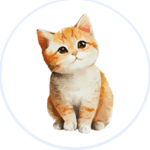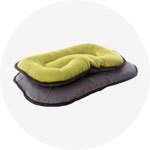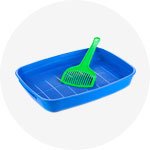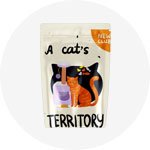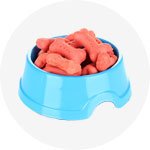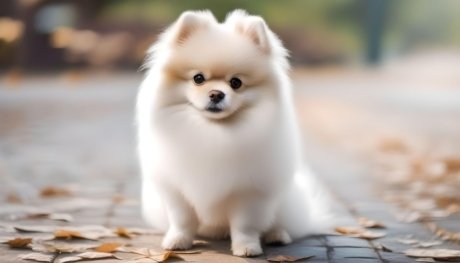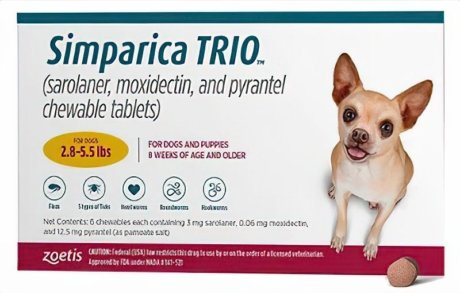Why Do Cats Make Biscuits | Mystery Behind Cats Kneading
If you’re a cat owner or a cat enthusiast, you’ve probably noticed your feline friend making biscuits. This endearing behavior involves your cat rhythmically pushing and pulling their paws against a soft surface, like kneading dough. But why do cats do this? In this article, we’ll explore the fascinating reasons behind this charming feline habit. Let’s uncover the secrets of why cats engage in this delightful and often mysterious behavior.
Why Do Cats Make Biscuits
Cats make biscuits as an instinctual and comforting behavior. This action, formally known as “kneading,” involves your cat rhythmically pushing and pulling their paws against a soft surface, such as your lap, a blanket, or even your own skin. While it may appear quirky, kneading serves several purposes for cats:
- Nurturing Instinct: Kittens knead their mother’s belly to stimulate milk flow during nursing. This comforting act continues into adulthood, serving as a nostalgic reminder of kittenhood and creating a sense of security.
- Relaxation: Cats often knead when they feel relaxed and content. It’s a way for them to unwind, de-stress, and express their comfort and happiness.
- Scent Marking: Cats have scent glands in their paw pads, and when they knead, they release pheromones onto the surface they’re kneading. This marks the territory as safe and familiar, creating a comforting environment.
- Stretching Muscles: Kneading provides cats with a gentle stretching exercise, helping to maintain muscle tone and flexibility in their paws and limbs.
- Bonding: Cats may knead their owners as a way to bond and show affection. It’s their unique way of saying, “You’re part of my family, and I love being with you.”
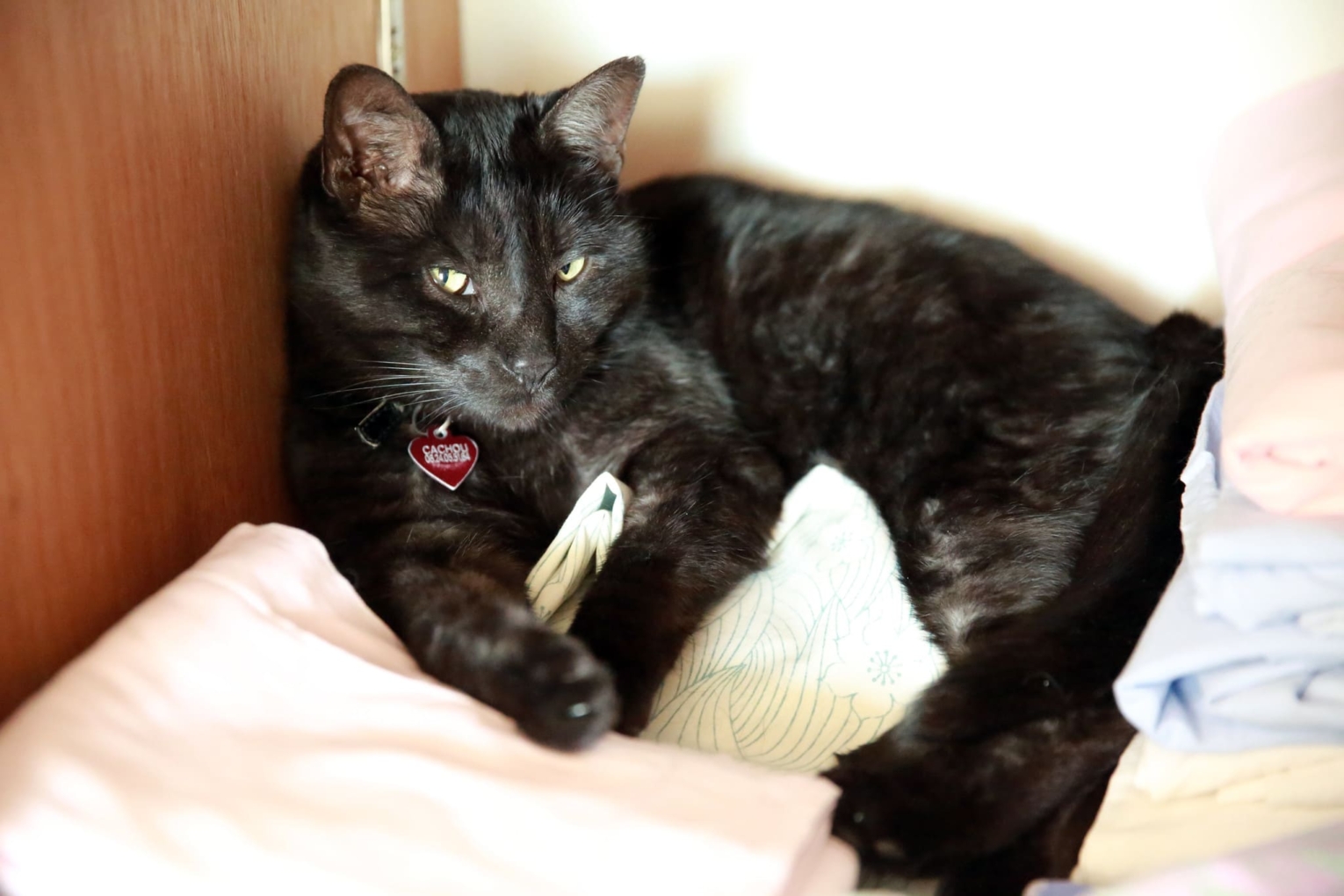
So, when your cat makes biscuits, consider it a special moment of connection and comfort between you and your furry companion.
Why Do Cats Make Biscuits On You
When a cat “makes biscuits” on you, it’s a behavior known as kneading. Cats knead by rhythmically pushing their paws in and out against a soft surface, such as your lap or chest. This behavior often begins in kittenhood when nursing from their mother. There are several reasons why cats make biscuits on their human companions:
- Comfort and Relaxation: Kneading is a soothing and comforting action for cats. It’s reminiscent of the kneading motion they made while nursing, which brought them comfort and nourishment.
- Bonding: Cats often knead when they feel close and affectionate toward their human companions. It’s a way for them to demonstrate their trust and affection.
- Marking Territory: Cats have scent glands in their paw pads, and when they knead, they release their scent onto the surface they’re kneading. It’s a way for them to mark their territory and establish a sense of ownership over you.
- Stress Relief: Some cats knead when they’re feeling stressed or anxious. The rhythmic motion may help them self-soothe during times of tension.
Why Do Cats Make Biscuits On Your Stomach
When cats knead your stomach specifically, it’s often an extension of the kneading behavior explained above. However, there are additional reasons why cats may knead on your stomach:
- Warmth and Comfort: Your stomach area may be a warm and cozy spot for your cat to knead, providing them with added comfort.
- Association with Food: Cats sometimes knead on or near their food source. Kneading on your stomach may be a way for them to express their association between you and being fed.
- Attention-Seeking: Cats may knead on your stomach to get your attention. If they want affection, playtime, or food, kneading can be a way to communicate their desires.
Why Do Cats Make Biscuits On Blankets
Cats often knead on blankets for several reasons, similar to why they knead on humans:
- Comfort and Nesting: Kneading helps cats create a comfortable and secure spot for themselves. When they knead on a blanket, they may be preparing a nesting area or simply seeking warmth and coziness.
- Territorial Marking: As mentioned earlier, cats have scent glands in their paw pads. Kneading on a blanket allows them to mark the blanket with their scent, which can make it feel more familiar and comforting to them.
- Stress Relief: Cats may knead on blankets when they’re feeling stressed or anxious. The repetitive motion can help them relax and alleviate tension.
- Nursing Instinct: The kneading behavior is often associated with kittenhood and nursing. Even as adults, cats may knead as a nostalgic and comforting behavior.
The Science Behind Cat Kneading

Paw Anatomy and Kneading
Cats possess unique paw anatomy that plays a crucial role in kneading. Their paws are equipped with sweat glands and sensory receptors, making them intricate tools for this behavior. These features enable them to engage in kneading with precision and purpose. When a cat kneads, they alternate pressing their paws against a soft surface, such as your lap or a cozy blanket. This rhythmic motion is both soothing and intriguing.
Muscle Memory and Kneading
Kneading is not a random action; it is deeply ingrained in a cat’s muscle memory. This instinctual behavior traces back to their early days, and their muscles remember the soothing rhythm of kneading. Kittens knead their mother’s belly to stimulate milk flow during nursing. This not only ensured their nourishment but also strengthened the bond between mother and kittens. Even as adult cats, this muscle memory persists, and they often knead when they feel content and secure.
Instinctual Behavior
The Early Days of Kittenhood
Kittenhood is a crucial phase in a cat’s life, and kneading is closely associated with this period. It serves as a connection to their earliest days and the maternal bonding that occurs during nursing. Kneading was a sign of comfort and nourishment for kittens, as it helped them access their mother’s milk. This behavior is deeply rooted in the kitten’s survival instincts, and it brings them a sense of security.
Survival Instincts and Kneading
Kneading isn’t just about comfort; it’s a survival instinct. In the wild, kittens kneaded their mother’s belly to stimulate milk flow, ensuring their sustenance and survival. This instinct is deeply embedded in domestic cats as well. Even though they no longer rely on kneading for nourishment, it remains a comforting and instinctual behavior that reflects their early days of survival and maternal care.
Theories Behind Cat Kneading

Comfort and Relaxation
The comfort and relaxation theory suggests that cats knead when they are content and at ease. This behavior reflects their inner peace and satisfaction, a way of self-soothing and expressing their comfort. When your cat kneads on your lap or a soft blanket, it’s a sign that they feel safe and relaxed in your presence. It’s their way of saying, “I’m happy and content.”
Territorial Marking
Another theory proposes that kneading serves as a means of territorial marking. Cats have scent glands in their paws, and by kneading, they leave their scent on objects or people. This behavior signifies a cat’s need to assert ownership and mark their territory. So, when your cat kneads you, they are not only expressing affection but also claiming you as their own. It’s a unique way of saying, “You belong to me.”
A Connection to Kittenhood
Kneading may also have an emotional component. It’s believed to be a way for adult cats to relive the comforting moments of nursing and bonding with their mother during kittenhood. This theory explains the emotional comfort that kneading brings to cats. When your cat kneads, it’s like taking a trip down memory lane to the days when they felt the warm embrace of their mother and the soothing rhythm of nursing.
Stress Relief and Kneading
Stress is a part of every creature’s life, and cats are no exception. Kneading can be their way of coping with stress and anxiety. It’s a stress release mechanism, helping them manage the various stressors in their environment. If you notice your cat kneading more frequently during times of change or tension, it’s likely their way of seeking comfort and relief.
Cat Kneading and Bonding
The Role of Trust
When a cat kneads on you, it’s a sign of trust and comfort. This behavior strengthens the bond between cats and their owners, signifying a deep level of trust in the relationship. It’s a gesture of love and connection. When your cat chooses to knead on you, they are showing that they feel safe and secure in your presence. It’s a heartwarming affirmation of the special bond you share.
The Emotional Connection
Kneading is an emotional expression. It reflects the love and emotional connection between cats and their human family members. Understanding this connection can deepen your relationship with your feline friend, creating a stronger emotional bond. When your cat kneads on you, they are not just seeking physical comfort but also emotional closeness. It’s their way of saying, “You mean a lot to me, and I trust you completely.”
Is Cat Kneading Always a Good Sign?
While kneading is generally associated with positivity, there are exceptions.

Monitoring Kneading Behavior
Being attentive to your cat’s body language during kneading is crucial. Signs of discomfort or changes in behavior during kneading should be monitored closely. Cats communicate their feelings through their actions. If your cat suddenly stops kneading or seems agitated while doing so, it’s essential to assess their overall well-being.
When to Seek Professional Advice
There are situations where you might need to consult a veterinarian or feline behavior expert. Changes in kneading behavior can sometimes indicate underlying health issues or emotional stress that require professional assessment. If your cat’s kneading behavior becomes excessive, painful, or is accompanied by other concerning symptoms, it’s best to seek expert advice to ensure your cat’s health and happiness.
Should You Encourage Cat Kneading?
Kneading is a beautiful aspect of cat behavior, and you can play a role in encouraging it.
Creating the Perfect Kneading Environment
To encourage your cat to knead comfortably, you can create the perfect environment. Providing soft, welcoming surfaces and a sense of security can make your cat feel safe and comfortable enough to engage in kneading. Offering cozy blankets or special kneading spots can be a delightful way to enhance your cat’s kneading experiences.
Tips for Cat Owners
Understanding your feline friend’s kneading behavior is essential for their well-being and your relationship with them.
Recognizing Signs of Discomfort
Not all kneading is a sign of contentment. It’s crucial to distinguish between comforting kneading and kneading due to pain or discomfort. Recognizing signs of discomfort ensures that you can address your cat’s needs appropriately. If your cat appears distressed while kneading or shows signs of pain, it’s essential to consult a veterinarian to rule out any underlying issues.
Setting Boundaries
Cats have their preferences, even when it comes to kneading. Understanding their cues and boundaries is key to fostering a positive environment and allowing them to knead on their terms. If your cat prefers to knead on a specific surface or at a particular time, respecting their choices can contribute to a harmonious relationship.
Proper Cat Handling During Kneading
Handling your cat correctly during kneading can enhance the experience for both you and your pet. Gently engaging with your cat and respecting their comfort can lead to a more enjoyable kneading session. Avoid abrupt movements or actions that might startle your cat while they knead, as this can disrupt their sense of security.
Common Misconceptions
There are several misconceptions about cat kneading that need to be addressed.
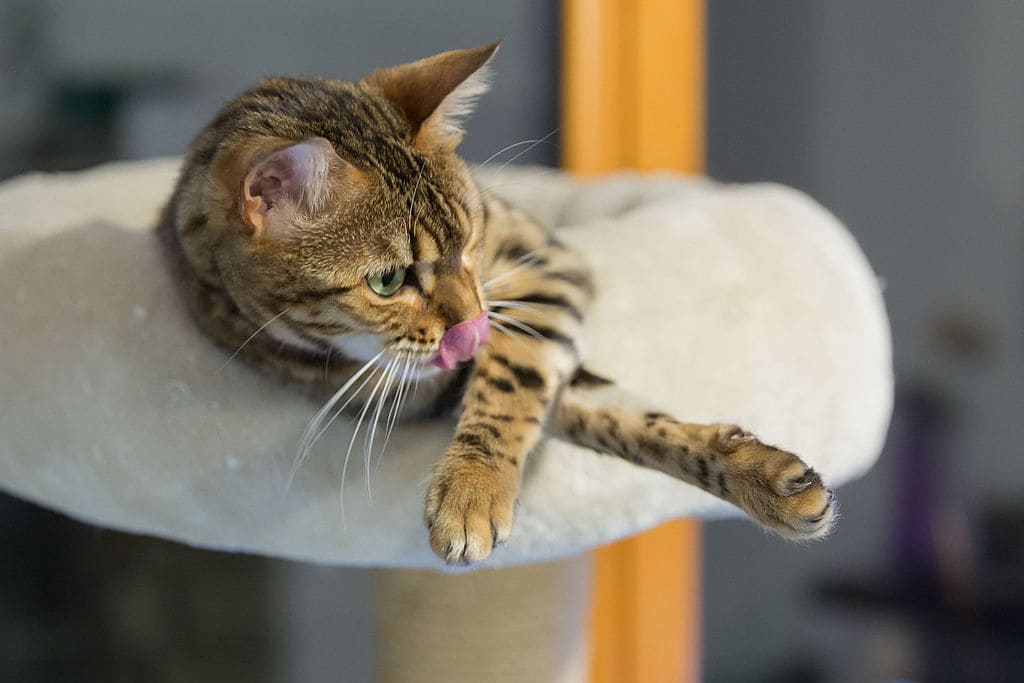
Kneading and Hunger
Contrary to popular belief, kneading isn’t necessarily linked to hunger. It’s more about comfort and emotional well-being. Understanding this distinction can help you respond appropriately to your cat’s needs. If your cat kneads after a meal, it’s likely a sign of contentment rather than hunger. Cats often knead when they feel relaxed and satisfied.
Adult Cats Kneading
Kneading isn’t limited to kittens; adult cats often continue this behavior throughout their lives. It’s a testament to the enduring impact of kittenhood on their behavior and emotional well-being. Adult cats may knead when they feel happy, secure, or in need of comfort. This behavior serves as a reminder of their early bonding experiences and brings them a sense of nostalgia and comfort.
Pain and Kneading
While kneading is usually a sign of comfort, there are instances where it can indicate pain. It’s essential to recognize the difference and be attentive to signs of pain or discomfort in your cat. If your cat suddenly starts kneading in a distressed manner or avoids kneading altogether due to pain, it’s crucial to consult a veterinarian to address any underlying health issues.
The Art of Cat Communication
Kneading is just one form of cat communication. Understanding their body language and the nuances of purring will deepen your connection with your feline friend.
Understanding Body Language
Cats communicate through body language, and we’ll decode some of the most common signals they send through their movements. This understanding will help you respond to your cat’s needs and emotions better. When your cat kneads, pay attention to their overall body language. If they appear relaxed and content, it’s a positive sign. However, if they suddenly tense up or display signs of distress, it’s essential to assess their well-being and comfort.
The Subtleties of Purring
Purring is another mysterious aspect of cat behavior. We’ll explore the various reasons why cats purr and how it relates to kneading, enhancing your ability to connect with your cat on a deeper level. Cats often purr while kneading as a way of expressing their profound contentment and satisfaction. The combination of kneading and purring is a clear indicator that your cat is in a state of bliss and feels a deep bond with you.
A Deeper Look into Kittenhood
Kneading has its roots in kittenhood, and we’ll take a more profound look into how this behavior plays a role during this adorable phase of a cat’s life.
Maternal Bonding and Nursing
The bond between a mother cat and her kittens is incredibly special. Kneading during nursing cements this bond and ensures the survival and well-being of the litter. Understanding this phase provides insight into why kneading is so deeply ingrained in a cat’s behavior. During nursing, kneading helps kittens stimulate milk flow from their mother. It’s a crucial part of their early development, ensuring they receive the nourishment they need to grow and thrive.
The Significance of Kneading in Kitten Development
Kneading isn’t just about milk flow; it also contributes to a kitten’s physical and emotional development. It shapes their future behavior, influencing their adult kneading habits and their overall well-being. The act of kneading helps kittens develop their muscles and coordination. It’s also a source of comfort and reassurance during their vulnerable early days. This early exposure to kneading sets the stage for their lifelong connection to this behavior.
Kneading Behavior Across Different Cat Breeds
Cats come in various breeds, each with its unique characteristics. We’ll investigate how different cat breeds exhibit kneading behavior and whether there are breed-specific tendencies.
Siamese Cats and Their Unique Kneading Style
Siamese cats are known for their vocal nature, and their kneading behavior has its distinct characteristics. We’ll delve into what makes Siamese cats stand out in the world of kneading and how their personality traits influence this behavior. Siamese cats often knead with more intensity and vocalize during the process. Their expressive nature extends to their kneading, making it a vibrant and engaging experience. If you have a Siamese cat, you can expect a lively kneading session filled with purrs and meows.
Maine Coon Cats: Gentle Giants Who Love to Knead
Maine Coon cats are beloved for their gentle and friendly demeanor. We’ll explore their kneading habits and how their size factors into this behavior, highlighting the endearing nature of kneading among these magnificent felines. Maine Coon cats are known for their large, sturdy paws, which make their kneading especially comforting. They often knead with a gentle and deliberate motion, creating a soothing experience for both them and their human companions.
Persian Cats: Elegance in Every Knead
Persian cats are the epitome of elegance, and their kneading behavior reflects their graceful nature. We’ll uncover the intricacies of kneading among Persian felines, emphasizing the beauty and refinement they bring to this behavior. Persian cats approach kneading with a delicate touch, showcasing their elegant disposition. Their gentle and precise kneading motion is a reflection of their graceful personality and adds a touch of sophistication to this endearing behavior.
Cat Kneading and Stress Management
Stress is a part of life for cats, and kneading can be their way of managing it. We’ll delve into the connection between kneading and stress management, providing insights into helping your cat lead a stress-free life.
Kneading as a Stress Release Mechanism
We’ll explore how kneading serves as a stress release mechanism, helping cats cope with various stressors in their environment. Understanding this aspect of kneading can lead to a happier and healthier cat. When your cat kneads during moments of stress or change, they are essentially self-soothing. The rhythmic motion of kneading helps them relax and find comfort in challenging situations. It’s their way of telling you that they need a little extra support during stressful times.
Reducing Stress in Cats
Creating a stress-free environment for your cat is essential for their well-being. We’ll offer practical tips and techniques to help your cat lead a calm and content life, reducing the need for stress-related kneading. Providing a stable and secure environment is crucial for minimizing stress in your cat. This includes maintaining a consistent routine, offering safe spaces, and minimizing exposure to potential stressors. By creating a peaceful atmosphere, you can help your cat feel more at ease and reduce the need for stress-induced kneading.
The Role of Environment in Cat Kneading
The surroundings play a significant role in a cat’s behavior, including kneading. We’ll discuss how cat owners can create a cat-friendly home that encourages kneading and overall comfort.
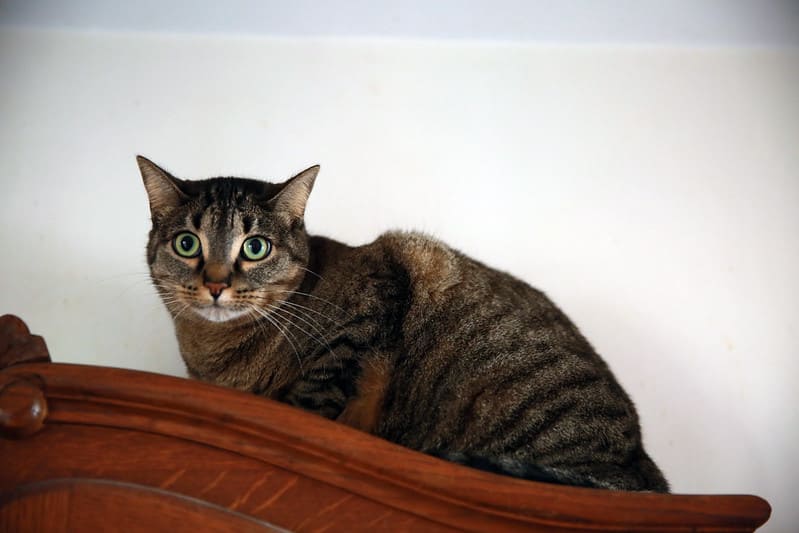
Crafting a Cat-Friendly Home
Your home can be a haven for your cat’s natural behaviors, including kneading. We’ll provide a comprehensive guide on how to create a cat-friendly living space, complete with cozy kneading spots. Designating specific areas for kneading can enhance your cat’s comfort and encourage them to engage in this soothing behavior. Providing soft surfaces, such as plush cushions or blankets, in these designated areas can make them irresistible for kneading.
The Importance of Cat Furniture
Cat furniture isn’t just a luxury; it’s a necessity for promoting kneading, exercise, and overall well-being. We’ll highlight the significance of cat furniture in your cat’s life and how it enhances their kneading experiences. Cat furniture, such as scratching posts, cat trees, and cozy hideaways, plays a pivotal role in a cat’s life. These pieces of furniture not only provide opportunities for kneading but also serve as outlets for exercise and exploration. By incorporating cat furniture into your home, you can enrich your cat’s environment and create more opportunities for them to knead comfortably.
Health-Related Kneading
Kneading behavior isn’t always related to comfort; it can also be a response to health issues. We’ll explore the instances where cats knead due to underlying health concerns and what this means for their overall health.
Kneading as an Indicator of Health Issues
Certain health conditions can trigger kneading behavior, and recognizing these signs is crucial for your cat’s well-being. We’ll provide a list of potential health issues that might lead to kneading and offer guidance on when to seek veterinary assistance. If your cat suddenly starts kneading excessively or in an unusual manner, it could be a sign of an underlying health issue. Conditions such as arthritis, dental problems, or abdominal discomfort can lead to changes in kneading behavior. It’s essential to monitor your cat’s kneading patterns and seek prompt medical attention if you suspect any health-related concerns.
The Surprising Link Between Kneading and Dental Health
Dental health is crucial for cats, and there’s an unexpected connection between kneading and their oral well-being. We’ll explain how these two factors intersect and what you can do to support your cat’s dental health, ensuring they enjoy a lifetime of comfortable kneading. Kneading can inadvertently benefit your cat’s dental health. The pressure applied to their gums and teeth during kneading can help reduce plaque and tartar buildup. To further support their dental well-being, consider providing dental treats or toys designed to promote healthy teeth and gums. By taking care of your cat’s dental health, you can ensure that they can continue kneading comfortably for years to come.
The Connection Between Kneading and Play
Kneading isn’t just about comfort and relaxation; it’s also intertwined with a cat’s playful nature. We’ll explore how kneading reflects a cat’s innate desire to play and how you can encourage both play and kneading for a happy and active cat.
How Kneading Reflects a Cat’s Playful Nature
Kneading is more than just a soothing motion; it’s an expression of a cat’s playful spirit. We’ll delve into the connection between kneading and playfulness, emphasizing the joy it brings to your cat’s life. Cats often incorporate kneading into their playtime. It’s a way for them to engage in a playful and rhythmic activity that mimics their early bonding experiences with their mother. By recognizing the connection between kneading and playfulness, you can encourage more interactive and enjoyable play sessions with your cat.
Encouraging Play and Kneading
We’ll provide practical tips and ideas on how to engage your cat in play that incorporates kneading, enhancing their physical and emotional well-being. A playful cat is a happy cat, and kneading is an integral part of their joyful playtime. You can encourage play and kneading by offering a variety of interactive toys and games. Feather wands, laser pointers, and puzzle toys can captivate your cat’s attention and stimulate their playful instincts. Incorporate kneading into these play sessions by providing soft surfaces or blankets for them to knead on while they play. This combination of play and kneading will keep your cat mentally and physically stimulated.
The Multifaceted Nature of Cat Kneading
Cat kneading is a multifaceted behavior, encompassing a wide range of emotions, instincts, and communication. This section will bring together all the threads we’ve explored throughout the guide, highlighting the complexity of why cats make biscuits.
Conclusion:
After this in-depth exploration of cat kneading, you are now equipped with a profound understanding of this fascinating feline behavior. Whether you’re a seasoned cat owner or new to the world of feline companionship, you have the knowledge to appreciate and interpret your cat’s kneading in a whole new light. Embrace this behavior as a reflection of the special bond between you and your beloved cat.
Frequently Asled Questions:
-
Why do cats knead and purr at the same time?
Cats knead and purr simultaneously as a sign of contentment and relaxation. Kneading is an instinctive behavior they develop as kittens when nursing. It stimulates milk flow from their mother’s teats. As adult cats, kneading remains a comforting and soothing action, often accompanied by purring to express their happiness and security.
-
Are there any cases where cat kneading should be a cause for concern?
In most cases, cat kneading is harmless and natural. However, if your cat suddenly starts kneading excessively, with signs of pain or discomfort, it could be a cause for concern. It may indicate an underlying medical issue, such as abdominal pain or arthritis. In such instances, consult your veterinarian for a thorough examination.
-
What are the most effective ways to encourage cat kneading?
Cats knead when they feel relaxed and safe. To encourage kneading, create a calm and cozy environment for your cat. Provide soft blankets or cushions where they can knead comfortably. Gentle petting and affection can also promote this behavior, as it reinforces the bond between you and your feline friend.
-
Do wildcats exhibit the same kneading behavior as domestic cats?
Yes, wildcats, including big cats like lions and tigers, exhibit kneading behavior as well. This behavior is not exclusive to domestic cats and is seen across the feline species. In the wild, kneading may have different functions, such as preparing a comfortable resting spot or expressing contentment within their social groups.
-
Can a cat’s kneading behavior change as they age?
Yes, a cat’s kneading behavior can change as they age. Kittens tend to knead more frequently and vigorously as they associate it with nursing. As cats grow older, they may continue to knead but with less intensity. Senior cats might knead less due to changes in their physical abilities and preferences. It’s essential to be attuned to your cat’s evolving needs and adapt to their changing behaviors as they age.
Recommended:
What Does Catnip Do To Cats | The Science behind Catnip to Cats
Kennel Cough Symptoms | Recognizing and Managing Canine Respiratory Infections


